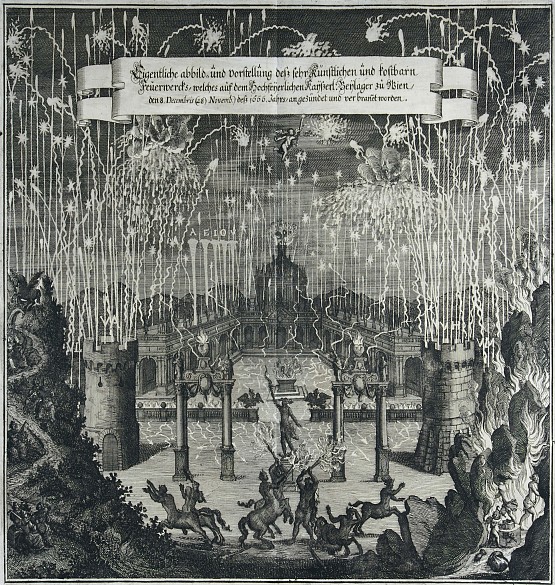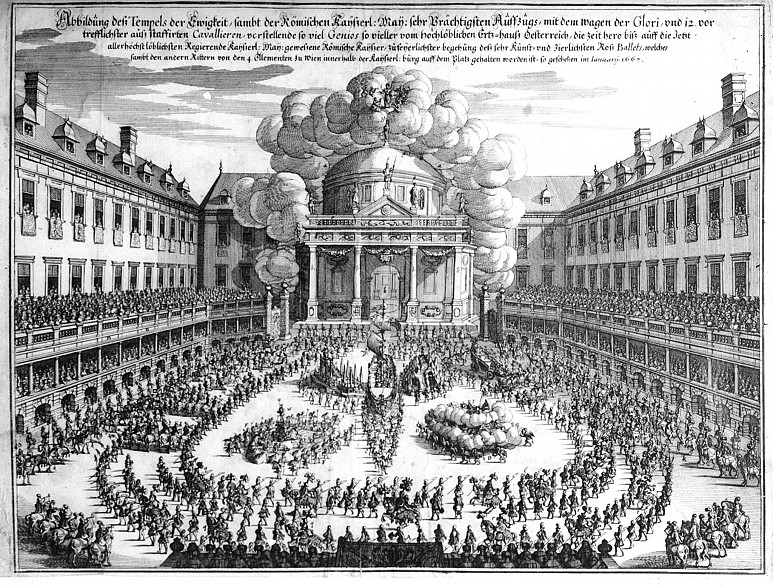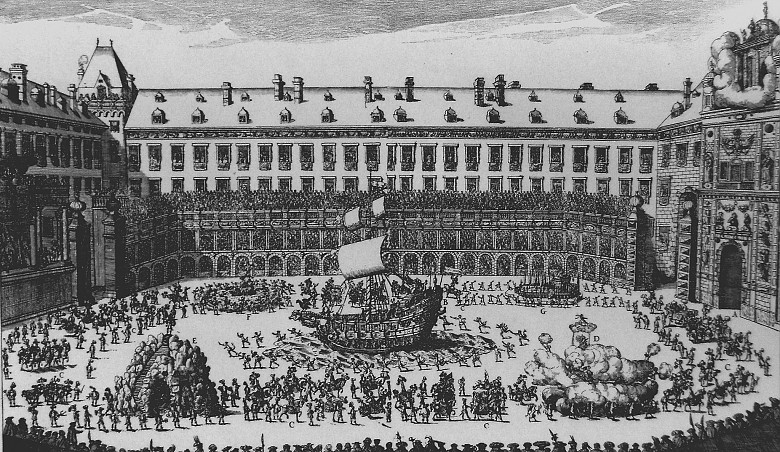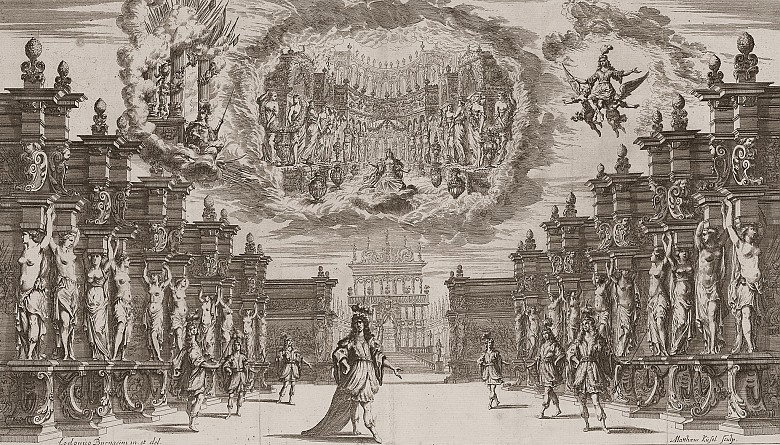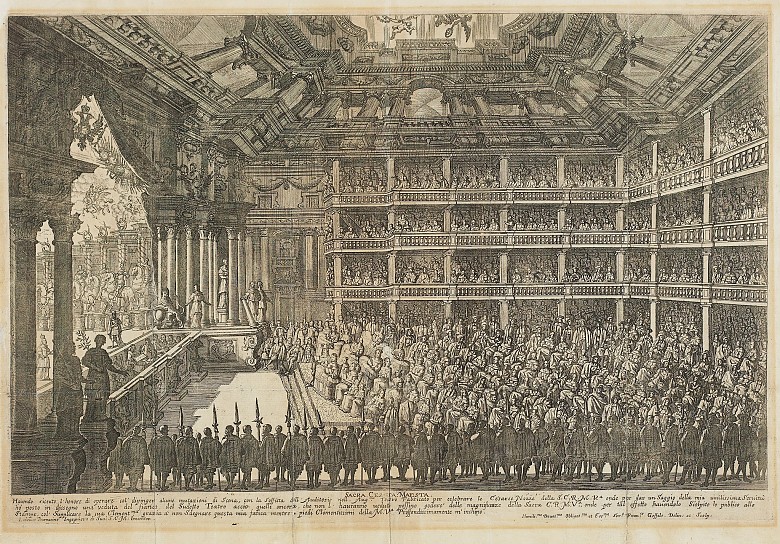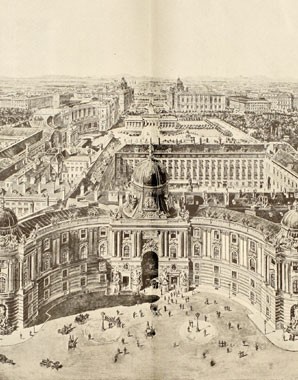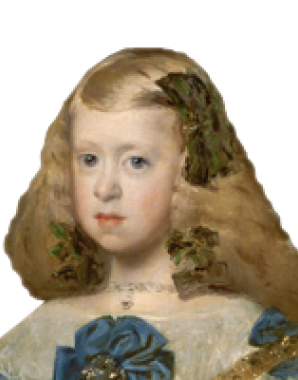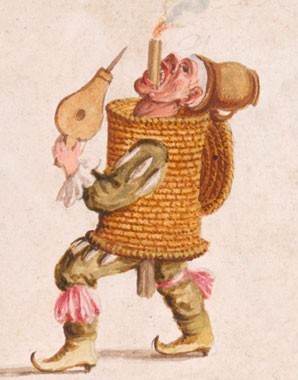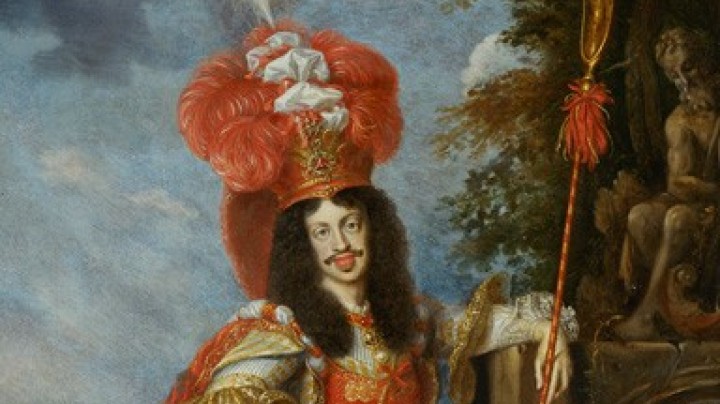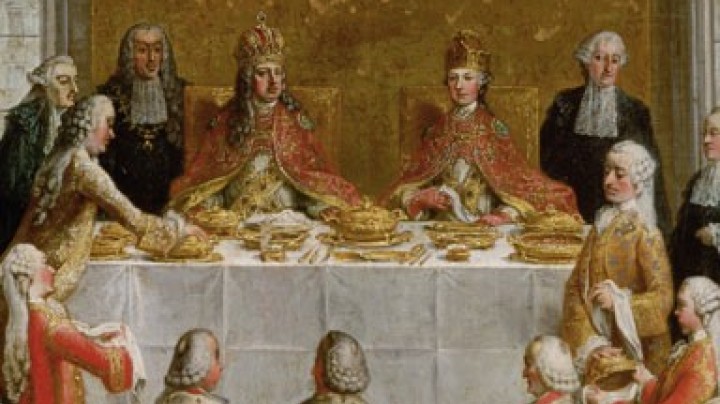Party-time: The marriage of Leopold I and Margarita of Spain
Lasting for almost two years, the festivities held to celebrate the marriage of Leopold I and Margarita Teresa of Spain in 1666 marked the climax of Baroque magnificence at the Viennese Court.
The wedding festivities started with a fireworks display accompanied by cannon fire – an inherent part of many grand Baroque celebrations – as an act of homage to the bridal couple and clear statement of the power and claim to leadership of the House of Habsburg: sparkling hearts ornamenting the initials L&M (Leopold and Margarita) were followed by 300 rockets illuminating the sequence A.E.I.O.U.
A year later, in 1667, another event in the programme of marriage celebrations took place: the equestrian ballet La Contesa dell'aria e dell'acqua, intended to overshadow the great festivities at Versailles and in which Leopold I himself took part, mounted on his horse, Speranza. Ingenious machinery enabled horses and carriages to soar aloft into the air.
The climax of the festivities was a performance of the opera Il pomo d'oro by Antonio Cesti, with additional music by Emperor Leopold and sets designed by Lodovico Ottavio Burnacini. The work was intended as homage to the bride. No expense or material was spared: the performance included crowd scenes and even live elephants.
For this opera a new opera house was built on the Cortina, the part of the city walls that stood near the present-day Burggarten. Commissioned from Lodovico Ottavio Burnacini by Leopold I in 1665 to mark his marriage, it could hold up to 5,000 people.
